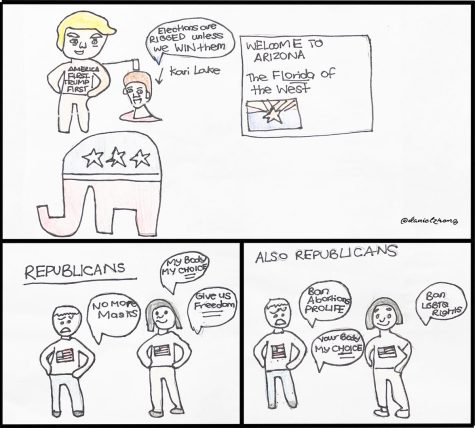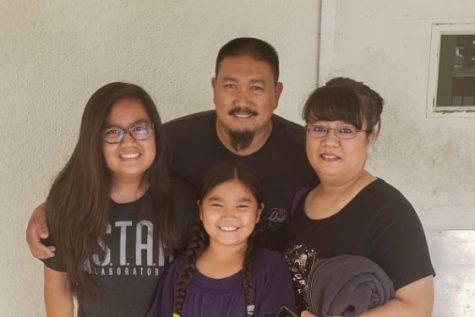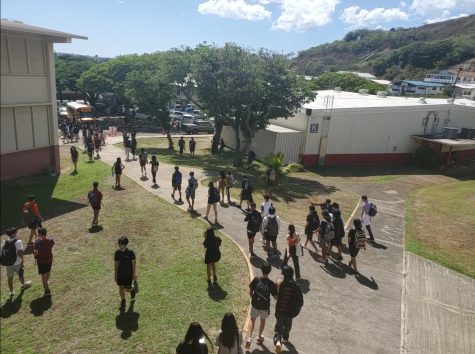Homelessness in Hawai’i
November 15, 2019
Although often depicted as home to paradise and opulence, Hawai’i fosters an ongoing homelessness problem. The problem must be eradicated to avoid community hazards on Hawai’i’s streets and preserve the islands’ paradise.
A City and County of Honolulu Point-in-Time (P.I.T.) Count states that 3,535 homeless lived in Hawai’i in January 2010. In January 2018, the U.S. Department of Housing filed that 6,530 people were homeless in Hawai’i (“Hawaii Homelessness Statistics”).
Hawai’i has the nation’s highest homeless per capita ratio — 505 homeless per 100,000 residents in June 2017, comparable to New York’s 436 homeless per 100,000 residents (Thompson, Rothman).
Putting the problem into scale, Hawai’i has approximately 1.4 million citizens while New York has about 8.6 million, the United States Bureau of Statistics reports in 2017. Hawai’i — which barely shows on maps — has a bigger homeless per capita ratio than any other state.
Isn’t that concerning?
“People want to come to paradise and they get here with a job but they find it’s really hard to live here [in Hawai’i],” Honolulu Mayor Kirk Caldwell states to CBS News. “Buying a home is super expensive, renting a place is very, very expensive.”
David Uberti from Huffpost claims that adversities like climate change in Pacific regions encourage immigration to Hawai’i. Unfortunately, hopeful travelers like Jesse Biluk and his family — who migrated for medical and educational reasons — underestimate Hawai’i’s costly expectations. Immigrants must either sacrifice human necessities like food or join homeless shelters.
Locals also struggle to maintain their lifestyle. PayScale reports that Hawai’i’s cost of living is 88% more expensive than all other U.S. states. Housing prices are also 202% above the national average.
Is paradise worth the struggle?
With more individuals unable to follow the state’s costly expectations, more homeless swamp the streets. Homeless primarily occupy Waikiki, the heart of tourism.
“We get so many complaints from visitors,” voices George Szigeti, president and CEO of the Hawaii Lodging & Tourism Association, to the Hawaii Business Magazine. “We’ve had visitors come up to our GMs and tell them how they’ve been coming to Hawaii for 15 years but they’re not coming back anymore because of the homeless.”
Tourism is the state’s principal income source — especially after sugarcane industries ceased. If the homeless problem causes Hawai’i to lose its luxurious reputation, tourism will decline and homelessness would become an economic threat.
Mentally unchecked individuals are also dangerous to their environment.
When an anonymous female attempted to pacify two squabbling homeless citizens, one of the men punched the woman unconscious, Star-Advertiser announces. She was sent to The Queen’s Medical Center, sustaining bruises and a concussion.
If homelessness is such an enormous problem, why isn’t it being addressed?
Hawai’i’s extreme homelessness problem stems from varying problems — like financial burdens, mental instability issues, and substance abuse — and has no definite solution, but can be solved through housing and support efforts.
Hawai’i’s government knows homelessness threatens its residents and economic state.
The Department of Human Services faces homelessness through the national Housing First program, offering chronically homeless with temporary and permanent homes. Supportive services are additionally provided.
Scott Morishige and Marc Alexander from Star-Advertiser reports that the project lowered Oahu’s homelessness rates by 184 people (4%) in 2019 — the first depletion since 2009. The program also reduced monthly medical costs by $6,200, or 76%, per individual.
Homeless shelters also provide housing and resources, each location offering varying supplies like health care. Individuals receive either limited-term or long-term care per shelter. Limited-care is designed to provide clients with enough resources to build a stable foundation, and eventually care for themselves.
Family Promise of Hawai’i, the Institute for Human Services Inc., and Na Kolea Honolulu are shelters within Oahu.
Government officials and Hawai’i’s residents have both noticed their state’s homelessness conditions, and are attempting to house homeless.
Authority figures and common people take initiative through support projects and volunteering in programs. Further community members should also help.
Homelessness cannot be radically reduced without a community effort.











